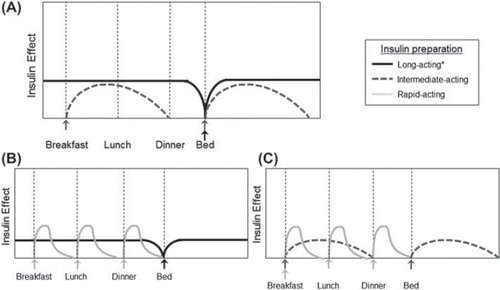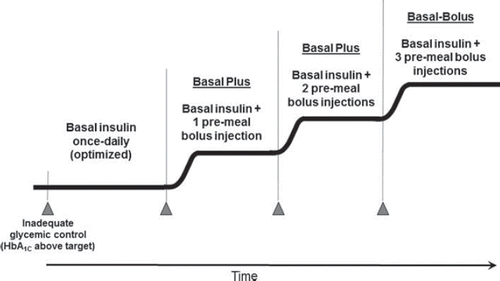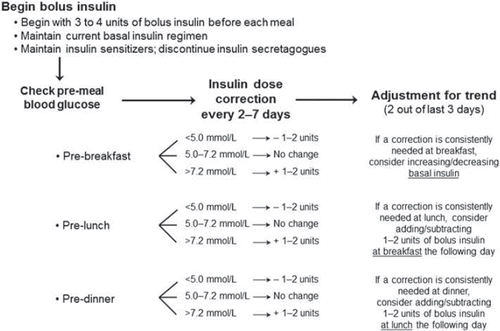Figures & data
Figure 1. Insulin replacement regimens for the management of hyperglycemia. A: Once-daily, long-acting insulin analogue (black) or twice-daily, intermediate-acting human insulin (dashed) as basal replacement therapy. Insulin regimens can be intensified with the administration of a rapid-acting insulin analogue (light grey) at mealtimes in addition to long-acting (B) or intermediate-acting basal insulin (C). Arrows indicate insulin injections at mealtimes or bedtime. *As per the package insert, long-acting insulin glargine may be given at any time in the day, and insulin detemir once daily should be given in the evening. Adapted from De Witt et al. (Citation21) with permission.

Table I. Parameters reported in studies involving insulin intensification or optimization.
Figure 2. Stepwise approach to the treatment of patients with type 2 diabetes mellitus. HbA1C = glycosylated hemoglobin. Adapted from Raccah et al. (Citation28) with permission.

Figure 3. A stepwise method for the introduction of basal-bolus insulin therapy and bolus dose adjustment. *For a patient on < 40 units/day basal insulin, a starting dose of 3 units may be appropriate; †Dose corrections based on self-monitored blood glucose (SMBG) values at pre-meal (lunch and dinner) and bedtime; ‡Glycemic targets: pre-meal SMBG of 5.0–7.2 mmol/L (90–130 mg/dL); bedtime SMBG of 6.1–7.8 mmol/L (110–140 mg/dL); targets should be individualized; §ADA 2012 recommends treating to HbA1C < 7.0%; target should be individualized to the patient. FPG = fasting plasma glucose; HbA1C = glycosylated hemoglobin.

